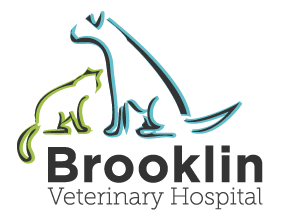Library
-
Chronic lymphocytic leukemia is a slowly progressing cancer of a type of white blood cell called a lymphocyte. It can develop at any age but is more typically detected in middle-aged to senior dogs. It also seems to be more prevalent in German Shepherds and Golden Retrievers. This disease is often asymptomatic and detected on routine lab screening. Further diagnostic procedures, as well as treatments and prognoses, are described in this handout.
-
Clostridial enterotoxicosis is a complex and poorly understood syndrome characterized by diarrhea that is associated with the bacteria Clostridium perfringens (CP). It is associated with acute or chronic diarrhea. Clostridial enterotoxicosis is not caused by the bacteria directly, but by a toxin produced by the bacteria.
-
The general condition of your dog's skin and coat are good indicators of his health. A healthy coat should be shiny and smooth, not brittle or coarse, and healthy skin should be supple and clear, not greasy, flaky, or bumpy. Selective breeding has led to the development of dogs with various coat characteristics requiring varying grooming needs. Nutrition also plays an important role in skin and coat maintenance.
-
Coccidioidomycosis is a fungal disease caused by the soil fungus Coccidioides immitis or Coccidioides posadii. The early signs of coccidioidomycosis include fever, lethargy, lack of appetite, coughing, and joint pain. Diagnosis is by biopsy of lesions or blood testing for antibodies to the Coccidioides organism. The prognosis for recovery is dependent of the extent of lesions in the dog’s body.
-
Colitis simply refers to inflammation of the large intestine or colon. Signs include frequent, small volumes of semi-formed to liquid feces, straining, and small amounts of bright red blood. The causes of colitis include stress, infections, and parasites, trauma, allergic colitis, and primary inflammatory bowel disease. The diagnosis of colitis is based on your pet's clinical signs and history, microscopic evaluation of the feces, rectal examination, cytology, and blood tests. The specific cause of colitis will dictate the appropriate treatment. For most dogs diagnosed with colitis, the prognosis is excellent for a speedy recovery.
-
Collie eye anomaly (CEA), also called “collie eye defect,” is an inherited, developmental disease in dogs in which there is a mutation of the gene that determines the development of the eye. This mutation results in defects of many layers of the back of the eye. The most common sign of CEA is blindness.
-
Color dilution alopecia is an autosomal recessive genetic disorder that affects dogs with dilute-colored coats causing hair loss. Some dogs will also be affected by secondary bacterial infections so topical management and pruritus treatments may be needed to improve the dog's comfort. Affected dogs and their relatives should not be bred.
-
Congestive heart failure (CHF) refers to the heart's inability to pump adequate blood to the body. There are many causes of CHF in dogs. The two most common causes are mitral valve insufficiency (MVI), or a leaky mitral valve, and dilated cardiomyopathy (DCM). The most common clinical sign of CHF is persistent coughing accompanied by difficulty breathing. Other signs include coughing when at rest or sleeping, an increased resting respiratory rate or excessive panting, persistent loss of appetite, a swollen belly, and pale or bluish gums.
-
Conjunctivitis means inflammation of the conjunctiva. The most common signs of conjunctivitis include discharge from the eyes, squinting or excessive blinking, and redness or swelling around the eyes. Causes of conjunctivitis include bacterial and viral infections, allergies, breed-associated conditions, and tumors. Conjunctivitis can be secondary to other eye conditions including eyelid abnormalities, corneal ulcers, decreased tear production, uveitis, or glaucoma. To differentiate many of these conditions, your veterinarian must perform a complete and detailed ophthalmic examination, as well as several additional diagnostic tests. Treatment may include both topical and oral medications. Most dogs have an excellent prognosis, though some causes of conjunctivitis require long term or surgical treatment.
-
Constipation is infrequent or difficult passage of stool or feces and is typically a temporary condition. Though there are many causes of constipation in dogs, most cases are caused by ingestion of irritating or indigestible substances. Constipation is usually diagnosed through a physical examination and medical history. A rectal exam to rule out rectal strictures, tumors, foreign bodies, or other abnormalities may be done. Abdominal radiographs, blood tests, and urinalysis are valuable for a full diagnosis and development of a treatment plan. Biopsies may also be recommended if a rectal mass or stricture is suspected. Most cases of constipation are relatively easy to treat through the use of manual removal, enemas, and medications. The prognosis for constipation is determined by the exact cause.



